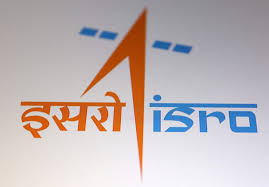PSLV Accomplishes Zero Orbital Debris Mission

On 21st March 2024, the Indian Space Research Organisation (ISRO) achieved a zero orbital debris mission with the successful re-entry of its PSLV Orbital Experimental Module-3 (POEM-3) into Earth’s atmosphere, marking a crucial step in addressing the challenge of space debris for sustainable space missions. This achievement followed the PSLV-C58/XPoSat mission on 1st January 2024, which converted the final stage into POEM-3 for experimental purposes.
What is space debris?
Space debris consists of discarded launch vehicles or parts of a spacecraft that float around in space, hundreds of kilometers above the Earth, risking collision with a satellite or a space station. Debris can also be caused by an explosion in space or when countries conduct missile tests to destroy their own satellites.
Ever since the start of the space age there has been more space debris in orbit than operational satellites. Space debris comprises both natural meteoroid and artificial (human-made) orbital debris. Meteoroids are in orbit about the Sun, while most artificial debris is in orbit about the Earth.
Orbital debris is any human-made object in orbit about the Earth that no longer serves a useful function. Such debris includes non-functional spacecraft, abandoned launch vehicle stages, mission-related debris, and fragmentation debris.
There are half a million pieces of debris the size of a marble or larger (up to 0.4 inches, or 1 centimeter) or larger, and approximately 100 million pieces of debris about .04 inches (or one millimeter) and larger. There is even smaller micrometer-sized (0.000039 of an inch in diameter) debris.
There are half a million pieces of debris the size of a marble or larger (up to 0.4 inches, or 1 centimeter) or larger, and approximately 100 million pieces of debris about .04 inches (or one millimeter) and larger. There is even smaller micrometer-sized (0.000039 of an inch in diameter) debris.
China’s 2007 anti-satellite test, which used a missile to destroy an old weather satellite, added more than 3,500 pieces of large, trackable debris and many more smaller debris to the debris problem. Similarly, in February 2009, at 776 km altitude above Siberia, a privately owned American communication satellite — Iridium-33 — and a Russian military satellite — Cosmos 2251 — collided. The collision added more than 2,300 pieces of large, trackable debris and many more smaller debris to the inventory of space junk.
As a consequence of the rising debris object count, the probability for catastrophic collisions will also grow progressively, doubling the number of objects will increase the collision risk by approximately four times. As the debris population grows, more collisions will occur. For instance, in 1996, a French satellite was hit and damaged by debris from a French rocket that had exploded a decade earlier.
The United Nations Committee on the Peaceful Uses of Outer Space by the United Nations Office for Outer Space Affairs (UNOOSA) has paid particular attention to the issue of preventing and minimising the creation of space debris.
Zero Debris Re-entry
ISRO announced that the PSLV-C58/XPoSat mission left practically zero debris in orbit, showcasing the agency’s commitment to space debris management. The operation involved the final stage of the PSLV being converted into a 3-axis stabilized platform known as POEM-3.
POEM-3 Configuration and Objectives
POEM-3 was equipped with nine experimental payloads for technology demonstrations and scientific experiments, including contributions from academia, startups, and New Generation Enterprises (NGEs) through IN-SPACe. The mission objectives were successfully met within a month, showcasing the effectiveness of the platform for short-duration space experiments.
Re-entry and Impact
The orbital altitude of POEM-3 continued to decay naturally, with its expected impact in the North Pacific Ocean on 21st March 2024. ISRO’s meticulous planning and execution ensured a controlled re-entry process, minimizing potential risks associated with debris in space.
Technological Advancements in POEM-3
ISRO highlighted several technological advancements incorporated into POEM-3, such as total avionics in a single-chain configuration, industrial-grade components, standard interfaces, and innovative navigation algorithms. These features enhance the platform’s capabilities for conducting diverse experiments in space.
ISRO’s Commitment to Space Debris Management
Recognizing the escalating danger posed by space debris, ISRO reaffirmed its dedication to offering cost-efficient orbital experiment platforms while prioritizing responsible space practices. The agency outlined its strategies, including advancing debris tracking systems, developing deorbiting technologies, and promoting responsible satellite deployment practices.
Way Forward
ISRO’s successful re-entry of POEM-3 without leaving debris in orbit underscores its capabilities in space debris management and commitment to sustainable space operations. Through innovative platforms like POEM-3, ISRO continues to push boundaries in space exploration while ensuring the long-term viability of orbital environments for future missions.







